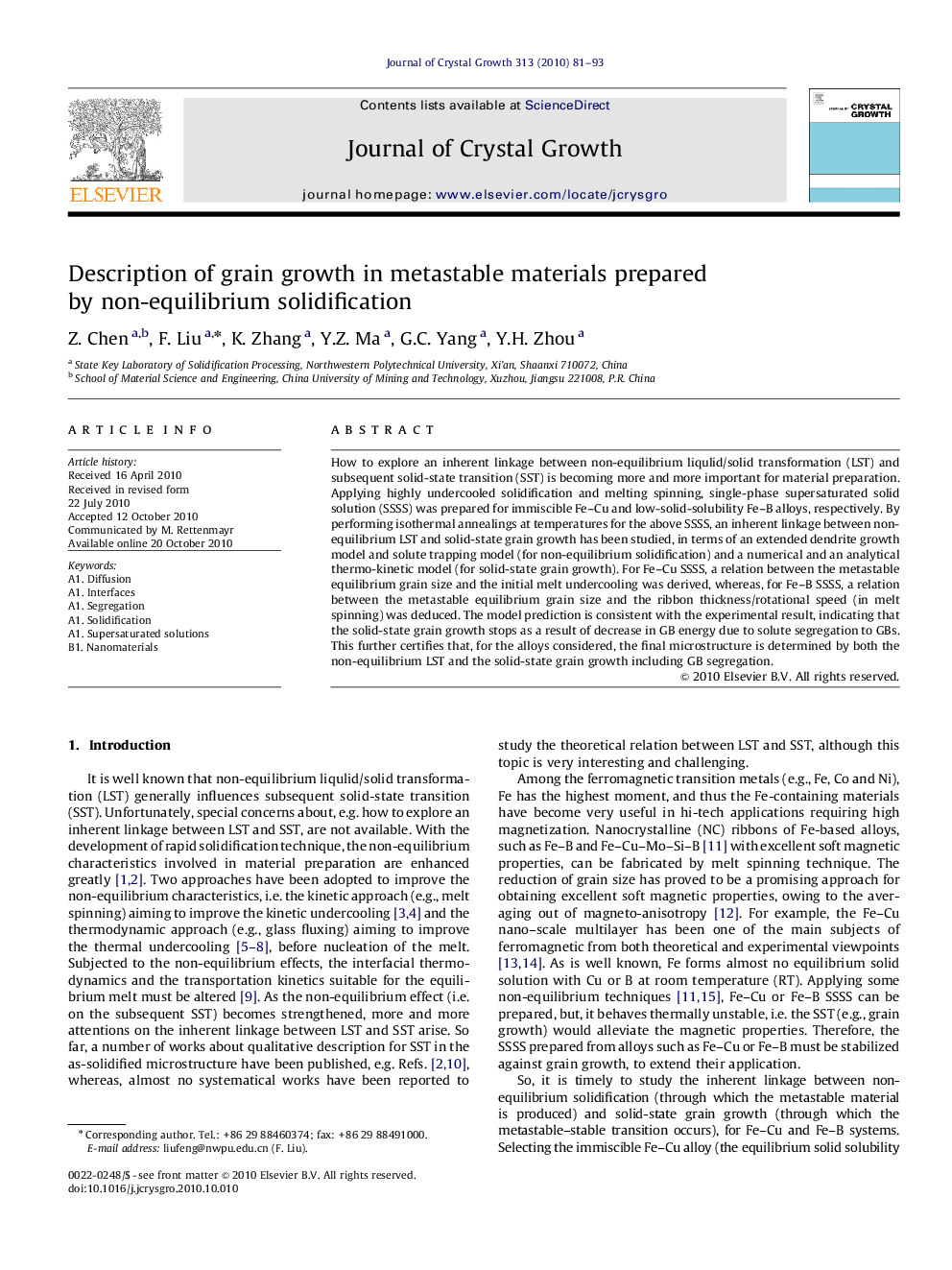| Article ID | Journal | Published Year | Pages | File Type |
|---|---|---|---|---|
| 1792580 | Journal of Crystal Growth | 2010 | 13 Pages |
How to explore an inherent linkage between non-equilibrium liqulid/solid transformation (LST) and subsequent solid-state transition (SST) is becoming more and more important for material preparation. Applying highly undercooled solidification and melting spinning, single-phase supersaturated solid solution (SSSS) was prepared for immiscible Fe–Cu and low-solid-solubility Fe–B alloys, respectively. By performing isothermal annealings at temperatures for the above SSSS, an inherent linkage between non-equilibrium LST and solid-state grain growth has been studied, in terms of an extended dendrite growth model and solute trapping model (for non-equilibrium solidification) and a numerical and an analytical thermo-kinetic model (for solid-state grain growth). For Fe–Cu SSSS, a relation between the metastable equilibrium grain size and the initial melt undercooling was derived, whereas, for Fe–B SSSS, a relation between the metastable equilibrium grain size and the ribbon thickness/rotational speed (in melt spinning) was deduced. The model prediction is consistent with the experimental result, indicating that the solid-state grain growth stops as a result of decrease in GB energy due to solute segregation to GBs. This further certifies that, for the alloys considered, the final microstructure is determined by both the non-equilibrium LST and the solid-state grain growth including GB segregation.
